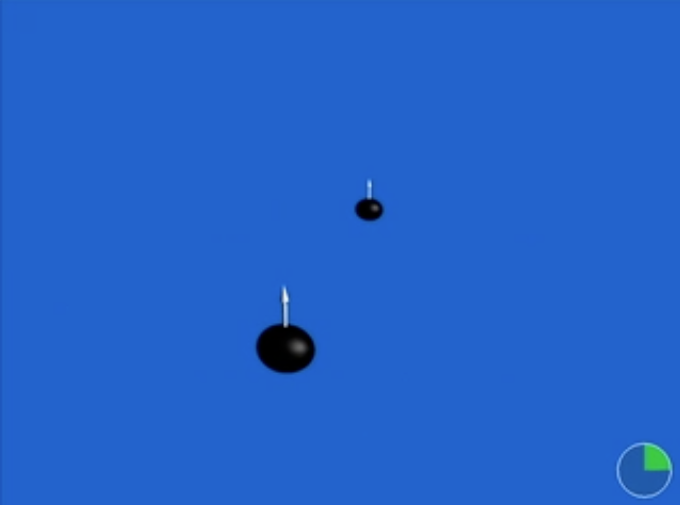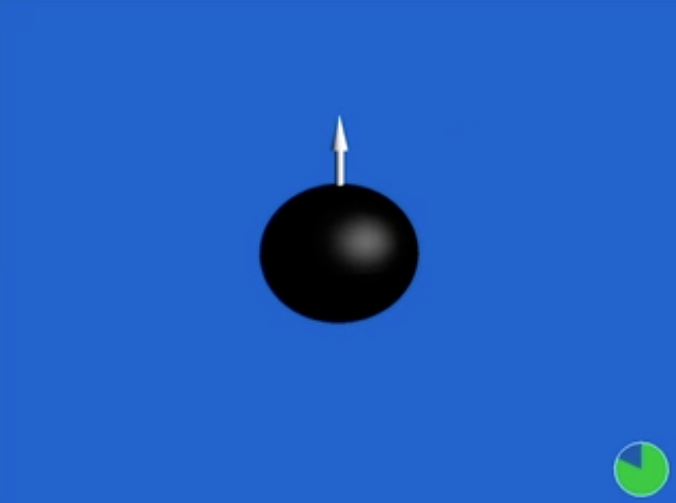Introduction

Fig. 1-1 Initial Configuration of Binary |
Evolution is performed with the BSSN scheme on an AMR grid with 10 levels
of refinement. The mesh spacing ranges from
ΔXmax = 12.1 M
in the outermost level to
ΔXmin = 0.024 M
in the innermost level. In this simulation, the initial coordinate radius of
the binary orbit is
D0/M = 9.89. Here M is the
total initial binary ADM mass. The black hole interiors, bounded by their
apparent horizons, are denoted by black spheres. Their motion is shown
in the orbital plane. The evolution is performed with "moving puncture" gauge conditions. (Note: The circle in the
lower right-hand corner of the above figure is a clock.)
Binary Inspiral and Merger
The binary makes approximately
six orbits prior to merging at
t ≈ 1400 M. As the
inital binary merges, we see the development of a common horizon which
oscillates until settling down at
t ≈ 1450 M. The
simulation continues until
t = 1590 M to demonstrate the
stability of the resulting Kerr black hole. The early growth of the
apparent horizons is a gauge (coordinate) effect.

Fig. 2-1 Evolution at t/M = 0 |

Fig. 2-2 Evolution at t/M = 400 |

Fig. 2-3 Evolution at t/M = 1450 |
Final Black Hole Parameters
Listed in the table below is the dimensionless spin of the black hole at
the end of our simulation. Also shown are the radiated energy and
angular momentum from gravitational wave emission. Here, M is the
initial ADM mass whereas M
BH is the final ADM mass of the
black hole.
| MBH/M |
0.91 |
| JBH/MBH2 |
0.92 |
| ΔE GW/M |
8.5% |
| ΔJGW/M2 |
59% |
| δE ≡ (M-MBH-ΔEGW)/M |
-2.2 x 10-3 |
| δJ ≡ (J-JBH-ΔJGW)/M |
6 x 10-4 |
Our simulation maintains excellent conservation of energy and momentum,
since δE and δJ are on the order of 10
-3 and
10
-4, respectively.




